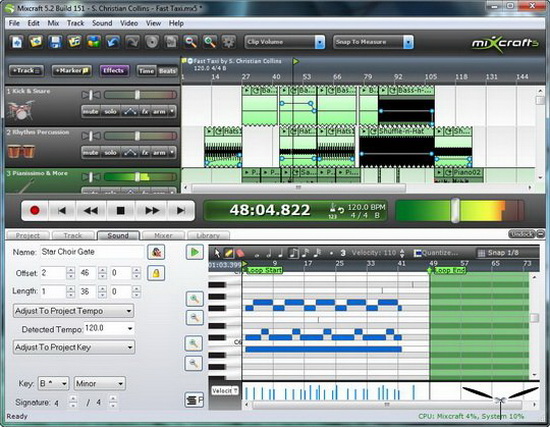

The software has CD burning built in, and if you do music-to-picture work, there is also video support that includes basic video editing and rendering. Track freezing is provided to squeeze more out of limited host computers, and you get a range of export options for creating your final mixes. The virtual mixing environment includes an automation system, send/return channels for global effects, submix (group) channels and multiple output channels if required. Support for multi-channel audio hardware is included and you get a very respectable range of audio and MIDI editing options. In many respects, Mixcraft follows convention, providing both multitrack audio recording and MIDI sequencing within a familiar track-based/timeline approach. I’ll therefore focus on the new features that have been added in this release but, for those unfamiliar with the software, a brief recap (along with a dip into those past reviews) will soon get you up to speed. Mixcraft is a mature piece of software and its core functionality hasn’t changed since Paul’s version 6 review.

#Acoustica mixcraft help pro
Three years on, Acoustica are back with version 7, which comes in three flavours: the budget Home Studio 7, the standard Mixcraft 7, and the upmarket Pro Studio 7 under review here. SOS has reviewed Mixcraft on a number of occasions, most recently when Paul Sellars looked at version 6 in the November 2012 issue. Thankfully, there are a number of very worthwhile alternatives and, for Windows users, Acoustica’s Mixcraft is one such option. Not everyone sits comfortably with one of the ‘big brand’ DAWs. If you’re looking for a music creation environment that’s affordable, powerful and easy to use, Acoustica’s Mixcraft 7 ticks all the boxes.


 0 kommentar(er)
0 kommentar(er)
